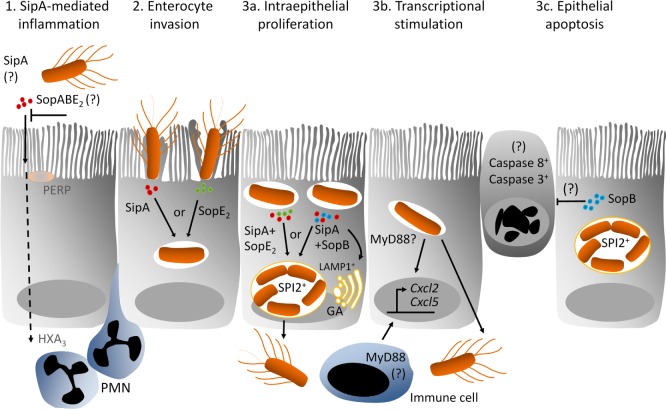Fig 7. Graphical illustration of the role of the SPI1-T3SS effectors SopA, SopB, SopE2 and SipA during enterocyte invasion and intraepithelial proliferation in vivo.
(1) SipA (red dots) promotes the early recruitment of PMNs and causes barrier disruption and disease progression. This has been reported to occur via stimulation of the epithelial surface molecule p53-effector related to PMP-22 (PERP) and activation of the chemotactic eicosanoid hepoxillin A3 (HXA3) [68, 89]. This effect appears to be invasion-independent and strongly enhanced in the absence of SopA, SopB and SopE2 suggesting that these effectors exert regulatory functions. (2) Among the studied effector molecules, expression of SipA (red dots), SopE2 (green dots), or SopE (not shown here) alone is sufficient to facilitate enterocyte invasion. Intraepithelial Salmonella then reside within a LAMP1 negative endosomal compartment and fail to proliferate or express SPI2 encoded genes. (3a) SipA together with SopE2 or SipA together with SopB (blue dots) facilitate the recruitment of LAMP1 (yellow membrane) from the Golgi apparatus (GA) and the generation of a replicative compartment with intraepithelial bacterial proliferation and expression of SPI2 effector molecules. (3b) Enterocyte invasion or, alternatively, penetration of the epithelial barrier via innate stimulation and signaling through MyD88 induce expression of the chemokines Cxcl2 and Cxcl5 in the epithelium. (3c) SopB appears to directly or indirectly inhibit caspase 3 and caspase 8 mediated epithelial cell apoptosis. GA, golgi apparatus; HXA3, hepoxilin A3; LAMP1, lysosomal-associated membrane protein 1; PERP, p53-effector related to PMP-22; SPI2, Salmonella pathogenicity island 2.

